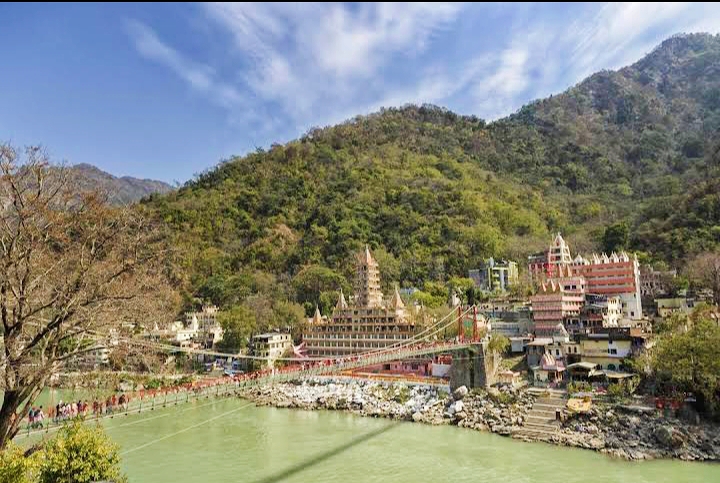

Laxman Jhula, an iconic iron suspension bridge over the Ganges River in Rishikesh, is more than just a crossing; it's a journey through Hindu mythology and stunning natural beauty. Offering panoramic views and connecting two prominent villages, it’s a pilgrimage and tourist destination.
Experiencing the **thrill of crossing a swinging bridge** over the sacred Ganges, soaking in breathtaking views.
Visiting nearby **temples and ashrams**, deepening spiritual exploration.
Feeling the **cool breeze and the divine atmosphere** as you traverse the bridge.
Prasad near Laxman Jhula often reflects the simplicity and purity of the surroundings. It provides a connection to the divine, carrying the blessings of the sacred land.
Note : Prasad is readily available from numerous vendors and small shops on both sides of Laxman Jhula and in the surrounding areas. You can also receive prasad at nearby temples and ashrams.
Devotees can offer prayers, perform rituals, and give alms to the needy, seeking spiritual merit and divine blessings at Laxman Jhula. The essence of the offering lies in the purity of intention and faith.
When making offerings, approach with humility and respect. It is advised to follow the customs and traditions observed locally. Consulting with a local priest can provide clarity on specific offerings for certain rituals or prayers.
Laxman Jhula serves as a gateway to various temples and sacred sites, offering opportunities to participate in a range of pujas and rituals for spiritual purification and blessings.
For most pujas, it's best to inquire locally with priests at nearby temples or ashrams. They can guide you on the appropriate rituals, offerings, and timings.
Laxman Jhula's historical significance is interwoven with Hindu mythology and its role as a vital passage across the Ganges, connecting villages and facilitating pilgrimage.
While the legend is ancient, the **first actual bridge was constructed in 1929.** It was a suspension bridge built after the original jute rope bridge was washed away in a flood. The construction was initiated by **Rai Bahadur Shiv Prasad Tulsi Ram of Bareilly.**
The original bridge stood until 2019 when it was closed to the public due to safety concerns. A **new, stronger bridge was constructed parallel to the old one** and opened in 2024 to ensure the safety of pedestrians and maintain the historical significance of the site. This newer bridge is designed to handle heavier loads and is built according to modern engineering standards. The old bridge was dismantled for safety reasons.
While the current bridge is modern, the **location itself holds ancient significance** due to the mythological association with Lord Laxman. Rishikesh, where Laxman Jhula is located, is an ancient holy town mentioned in various Hindu scriptures.
Laxman Jhula stands as a symbol of faith, connecting devotees to the divine and serving as a testament to the enduring power of mythology and spirituality.